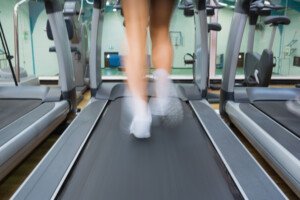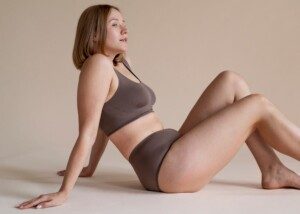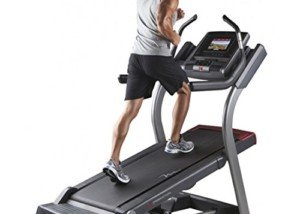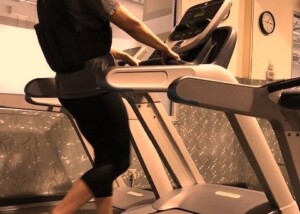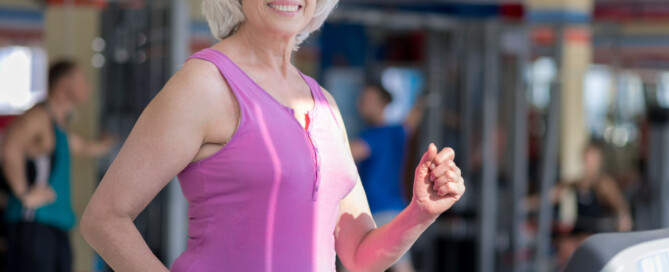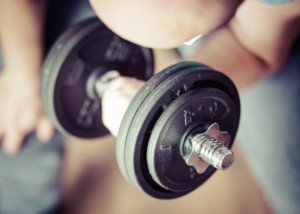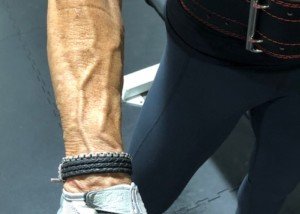At What Age Should Kids Stop Screaming While Playing?

At what point are kids too old to be screaming during play?
What’s that cutoff where it goes from magical to obnoxious? (more…)
Are Two Hours Nonstop too much for Cardio Exercise?

Two hours may or may not be too much cardio exercise, because it all depends. (more…)
Does Shoveling Snow Count As Exercise & If So What Kind ?

Find out why it’s a mistake to think that shoveling snow replaces your scheduled cardio or strength training workout for the day.
Shoveling snow elevates heart rate and makes one breathe faster, and the more out of shape someone is, the more pronounced these effects are; this makes shoveling snow sound like a form of cardio exercise. I’m a personal trainer.
It gets the heart rate up, yes, and even though the physical activity is non-rhythmic and tends to be done mostly with one’s dominant side, shoveling snow actually qualifies as a cardio workout.
There are a few variables to consider.
If your normal cardio workout consists of high intensity interval training (HIIT), your structured cardio session is more intense than the cardio output you’d be executing when shoveling snow.
Therefore, if your high intensity interval training session is scheduled the same day you shovel snow, I’d say do the HIIT first.
Consider the snow shoveling a chore that needs to be done and an opportunity to burn some extra calories so that you can enjoy a second piece of pie after dinner.
If you normally do nonstop (steady state) cardio, then consider that shoveling snow is not a good replacement, since this chore is of a stop and go nature
Often, people will rest for several minutes, just standing in the driveway looking about, before resuming the work.
This does not mimic steady state cardio, and if you prefer steady state, then don’t skip your planned steady state session.
Shoveling snow much more closely mimics HIIT, due to its stop and go nature of alternating intensity with complete rest.
If you’re used to HIIT, then you can mimic this by shoveling like a demon for about 30 seconds, then marching in place for a few minutes for recovery.
Don’t forget, though, that no matter how fit you are in terms of HIIT, shoveling snow is a weight-bearing activity that, when performed with a “lift with the legs” approach, combines semi-squatting motions with shoulder, chest, biceps and lower back work.
There is also some lighter rowing motions involved, when repositioning the shovel.
The semi-squatting refers to a partial squat or very bent knees, to allow the legs to absorb most of the forces rather than make the lower back do so.
Nevertheless, you’ll still end up using the lower back.
In summary, this chore can be substituted for high intensity cardio sessions if the physical exertion of the HIIT work intervals is comparable to the snow shoveling intervals.
 Lorra Garrick is a former personal trainer certified through the American Council on Exercise. At Bally Total Fitness she trained women and men of all ages for fat loss, muscle building, fitness and improved health.
Lorra Garrick is a former personal trainer certified through the American Council on Exercise. At Bally Total Fitness she trained women and men of all ages for fat loss, muscle building, fitness and improved health.
.
Top image: Shutterstock/Chiyacat
Should Distance Runners Do Upper Body Strength Training?
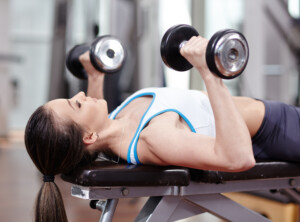
Many distance runners shun upper body strength training because they fear it will give them too much muscle bulk and thus impede their performance.
Distance runners, either competitively or recreationally, really should do some strength training.
Now, when you hear “strength training,” you might automatically picture some big bruiser at the gym bench pressing half the gym’s metal plates.
But strength training can also mean using light weights for many repetitions—with the goal of strengthening joints and reducing injuries, rather than packing on muscle.
Weight lifting doesn’t have to be synonymous with bulking up or getting heavier.
Distance runners should lift weights because this will aid in preventing muscle fatigue for their long excursions, particularly in the upper body.
Those new to long distance events often report that, during the activity, their arms get tired.
Some of these athletes will even run with their arms down at their sides to alleviate fatigue — the fatigue of maintaining bent arms (elbow flexion) during the race or training run.
Imagine having to hold both arms up in a bent position for two hours straight. Now add to that the shoulder motion to keep them swinging.
That can be very fatiguing. Lifting weights will help combat this fatigue.
Another reason long distance runners should strength train is because lifting weights improves range of motion.
This is important to those who do lengthy runs, because increased range of motion helps lower the risk of running related injuries such as hamstring strains.
Another benefit of lifting weights is that it will help stave off stiffness as the athlete progresses into the race or training course.
Distance running is very hard on the body. Some even say it’s harder on the body than bodybuilding is.
The strength training that runners should do is not to be confused with that which bodybuilders or physique athletes do.
Strength training for runners can be in the form of tension bands, even.
Any implement can be used, nevertheless: free weights, kettlebells, machines, medicine balls.
The distance runner should lift twice a week for 45 minutes, hitting all major muscle groups with light weights and 15-20 reps per exercise (sets should feel like there is work involved, but not to the extent that it’s difficult).
Good exercises include the lat pull-down, seated row, dumbbell press, shoulder raise and biceps curl.
 Lorra Garrick is a former personal trainer certified through the American Council on Exercise. At Bally Total Fitness she trained women and men of all ages for fat loss, muscle building, fitness and improved health.
Lorra Garrick is a former personal trainer certified through the American Council on Exercise. At Bally Total Fitness she trained women and men of all ages for fat loss, muscle building, fitness and improved health.
.
Top image: Shutterstock/Catalin Petolea
Why Hiking Is So Hard Despite Using a Treadmill Incline

Find out what’s going on when after spending lots of time on a treadmill incline, you get pooped very quickly hiking up hills. (more…)
What an EMG Test Involves: First Person Witness

EMG Test: What to Expect, What It’s Like…
An EMG test will determine if you have a deadly neurological disease as well as many benign conditions.
But exactly is involved during an EMG test?
And what IS an EMG test?
“A peripheral nerve test often has two parts to the nerve conduction study which tells about the function of the nerve as the signal travels to the spinal cord and back,” says Mitzi J. Williams, MD, clinical neurologist with Morehouse School of Medicine and clinical advisor for the Multiple Sclerosis Foundation.
“The actual EMG part involves a needle being inserted into the muscle, and the wave forms generated are compared to baseline normal values — and the muscle is activated or contracted to see if the activity is normal when the muscle contracts,” continues Dr. Williams.
What I Witnessed at the EMG Test
I sat in on an EMG test that was done on my mother, and it’s actually a very fascinating invention of medical technology.
The EMG test took about an hour, but some of that time was spent by the neurologist pausing to explain things related to her suspected condition (pronator syndrome or carpal tunnel syndrome).
The doctor will place very small sticker-like patches on the patient’s body, at the location of the symptoms.
He’ll then attach recording electrodes nearby these stickers. The electrodes are attached to a computer that’s a little bulkier than a laptop.
Preceding the actual testing, the doctor will type a lot of things into the computer.
To measure nerve conductivity, the doctor must provide an electric shock to the patient with a two-pronged device about the size of a cell phone.
When he delivers the shock, the result appears on the computer screen as a jagged horizontal line with a plus sign.
Moments later two more images (jagged horizontal lines or sine waves) will appear, one reflecting the muscle activity and one reflecting nerve activity.
The computer also shows the number of milliseconds it took for the nerve impulse to be conducted.
The neurologist at one point said that four milliseconds was normal, and 10 milliseconds was abnormal; that 50 meters per second was normal, and 42 meters per second was slow.
The patient may not be able to see the computer when all this is happening; my mother was lying on her back while the doctor conducted the EMG test on her right arm first.
He was heavily favoring pronator teres (a forearm muscle) syndrome as the diagnosis, though he concentrated the initial testing at the wrist and fingers.
Then he said, “It’s carpal tunnel.” This was a 100 percent positive diagnosis, because the EMG test can determine:
1) if nerves are firing normally, and
2) if numbness, tingling and strength loss are caused by a healthy nerve signal merely being blocked from arriving at its destination, as in my mother’s case of carpal tunnel syndrome.
Delivering the Electric Shocks
The EMG test involves the doctor moving around the various stickers and recording-electrodes, then administering a shock at various points higher up from where the recording devices are.
In my mother’s case, many of the shocks were delivered to her forearm.
In between the adjustments with the stickers and electrodes, he placed a tape measure to her skin to measure the length of the nerves.
The patient, if lying down and unable to see what the doctor is doing, will feel the doctor moving around the stickers and attaching the recording electrodes, then running a tape measure along the skin, and then the electric shock.
The voltage of the shock can be adjusted, and it can be very unpleasant, though it lasts a second.
Needle Pricks
The other thing that the patient will feel is pin pricks. The needle is a little thicker than an acupuncture needle, and the doctor will place a needle at varying locations as part of the EMG exam.
In the case of my mother, it appeared at one point that he embedded the needle a quarter of an inch into her palm.
The “poke” he did there hurt to high heaven based on my mother’s reaction, but again, it was only for a fraction of a second.
The neurologist also had her press her arm against resistance a few times.
Since all he needed was her arms, she was able to maintain any leg position she was comfortable with. An EMG test does not require the patient to be sedated.
So now you know what’s involved in an EMG test.
If you’re scheduled for an EMG exam, there’s nothing to be afraid of as far as how the procedure feels on your body.
If the idea of electric shocks and pin pricks has you unnerved (no pun intended), remember, this test is a godsend for doctors, and it has to be done to provide a diagnosis for your condition (or to rule out an imagined condition).

Dr. Williams is author of “MS Made Simple: The Essential Guide to Understanding Your Multiple Sclerosis Diagnosis.” She is a member of the American Academy of Neurology.
 Lorra Garrick has been covering medical, fitness and cybersecurity topics for many years, having written thousands of articles for print magazines and websites, including as a ghostwriter. She’s also a former ACE-certified personal trainer.
Lorra Garrick has been covering medical, fitness and cybersecurity topics for many years, having written thousands of articles for print magazines and websites, including as a ghostwriter. She’s also a former ACE-certified personal trainer.
.
Top image: Shutterstock/Eliyahu Ungar-Sargon
How to “Prepare” for Your Retirement that’s Only 2 Weeks Away

There’s nothing to fear if you’re retiring in two weeks.
I’m retiring in two weeks and here’s my magical, fool-proof plan against depression. (more…)
How to Work Biceps, Triceps & Forearms in a Single Exercise

Biceps, triceps and forearms … all in one exercise? This is actually possible.
There are three ways to hit the biceps, triceps and forearms in one routine.
But this does not mean that the biceps, triceps and forearm muscles get recruited at the exact same time. This is physically impossible.
Instead, what you want is a routine that flows from recruitment of one muscle group to the other … a movement that creates this progression all in one “repetition.”
The best exercise for working the triceps, biceps and forearms “all at once” involves using a cable machine with a single-grip handle.
Set the pulley anchor near the floor so that you can curl the weight stack up with a standard curling motion to recruit the biceps. With right arm first, simply curl up the weight (biceps).
Maintain the flexed position and shift your elbow back, as though you want to “elbow” somebody who’s standing behind you. This sets you up for a triceps extension.
Palm is still facing upward from the curl. Once the elbow is shifted back, extend the elbow so that your arm becomes straight, to work the triceps. Keep upper arm very close to your side.
Don’t let it flare out. Your arm is now straight (full elbow extension) and behind you.
Next, maintain the angle that your shoulder and upper arm are in, and curl the weight. Shift elbow back to the top position of the standard cable curl.
While elbow is still flexed in the curl position, rotate hand so that palm faces the floor. Now slowly lower.
This is the negative phase of a reverse cable curl, to work the forearm. You just completed one repetition.
Though I did a lot of explaining, this move can be done in a fluid, easily-transitioning motion that lasts 10 seconds.
For the second repetition, perform the positive phase of a reverse curl (forearms); shift elbow back; and, palm still facing floor, fully extend elbow.
Then perform the reverse curl again; bring elbow back to the top position of the standard cable reverse curl; rotate wrist so that palm faces upward, and do the negative portion of a biceps curl.
Do both versions for 8-12 reps total with one arm, then the other, and you will hit the biceps, triceps and forearm muscles.
Another exercise that works the biceps, triceps and forearms is a curl-press-extension. A shoulder press is required to make the transition from biceps to triceps.
Have a seat and curl dumbbells, then press them overhead. Keep upper arms vertical and bend arms at elbows so that dumbbells are behind your head, then extend elbows. Bring dumbbells back down to shoulder level, then uncurl them.
You’ll note minimal forearm recruitment here, but you can increase forearm recruitment by reverse-curling either the opening move or the closing move.
You can also recruit different forearm muscles by holding dumbbells in a hammer curl position before bringing them behind your head.
Finally, a routine called “muscle ups” will hit the biceps, triceps and forearms. Only problem is that people who can do these usually have a gymnastics background.
A muscle up is when you do a chin-up, and in the up position (and a very high up position at that), your hands literally leave contact with the bar for a split second so that you can shift their position, to enable you to push yourself up even further, so that your entire trunk is above the bar, arms straight.
Muscle ups can be done with a single bar (standard pull-up grip) or double bars (hammer grip). This routine is so difficult that I won’t spend any more time describing it.
To work biceps, triceps and forearms all in one exercise, your best bet is the cable pulley machine.
 Lorra Garrick has been covering medical, fitness and cybersecurity topics for many years, having written thousands of articles for print magazines and websites, including as a ghostwriter. She’s also a former ACE-certified personal trainer.
Lorra Garrick has been covering medical, fitness and cybersecurity topics for many years, having written thousands of articles for print magazines and websites, including as a ghostwriter. She’s also a former ACE-certified personal trainer.
.
Top image: Freepik.com
Should Pregnant Women Gain Weight if They’re Already Overweight?

If you’re obese and pregnant, you need to know what an OBGYN has to say about weight gain.
Are you obese and wondering if you should gain weight with your pregnancy?
According to the American College of Obstetrics and Gynecology, an average size woman is advised to gain 25-35 pounds during pregnancy.
Does this same rule apply if, upon becoming pregnant, a woman is already obese?
Obesity is when a person is at least 20 percent over the ideal weight for her height.
On one hand, it seems that if a woman is obese or even moderately overweight, she shouldn’t have to gain weight during her pregnancy, save for the pounds added from the baby itself, plus placenta and placental fluid.
The Institute of Medicine recommends that obese women gain 11-20 pounds for their pregnancy, says Randy Fink, MD, Director of the Center of Excellence for Obstetrics & Gynecology in Miami, FL.
Dr. Fink explains, “Pregnancy itself demands higher caloric intake, and an increase in certain dietary components.
“Truth be told, in obese women we like to see mom trading her weight for the baby’s weight; that is, she avoids excessive weight gain, and the baby grows normally. But if she is obese, why gain weight at all?”
“Remember, there are many components that lead to pregnancy weight gain. Mom’s blood volume doubles, so ‘fluid weight’ has a lot to do with maternal weight gain.
“Breasts become engorged and may even weigh 5-8 pounds each more than they did to start! The uterus grows to many times its normal size.
“There is a baby inside with a skeleton, blood of its own, and a placenta. So weight gain during pregnancy is not just mom putting on fat.”
One of the most common questions that Dr. Fink gets asked by his expectant patients is if they have gained too many pounds.
He explains, “A pregnant women needs to give herself permission to gain weight. It is okay, and expected. The important point to remember in pregnancy is to avoid excessive weight gain.
“Because of the increased caloric needs, it is easy to get out of control – especially considering there is no maternal instinct toward health eating in pregnancy (ice cream is not a food group!).”
An expectant woman, obese or not, should restrict sugar intake, avoid alcohol, never smoke, and avoid processed foods as much as possible, sticking to a plant-based diet that includes quality protein like grass-fed beef, wild game, wild Alaskan salmon, organic eggs, and nuts.
Creating an environment where the very best of medicine and gentle gynecology are practiced and where patients come first has always been Dr. Fink’s goal.
 Lorra Garrick has been covering medical, fitness and cybersecurity topics for many years, having written thousands of articles for print magazines and websites, including as a ghostwriter. She’s also a former ACE-certified personal trainer.
Lorra Garrick has been covering medical, fitness and cybersecurity topics for many years, having written thousands of articles for print magazines and websites, including as a ghostwriter. She’s also a former ACE-certified personal trainer.
.
Top image: Shutterstock/T.Den_Team
Cure for Hamstring Glute Pain from Treadmill Running
